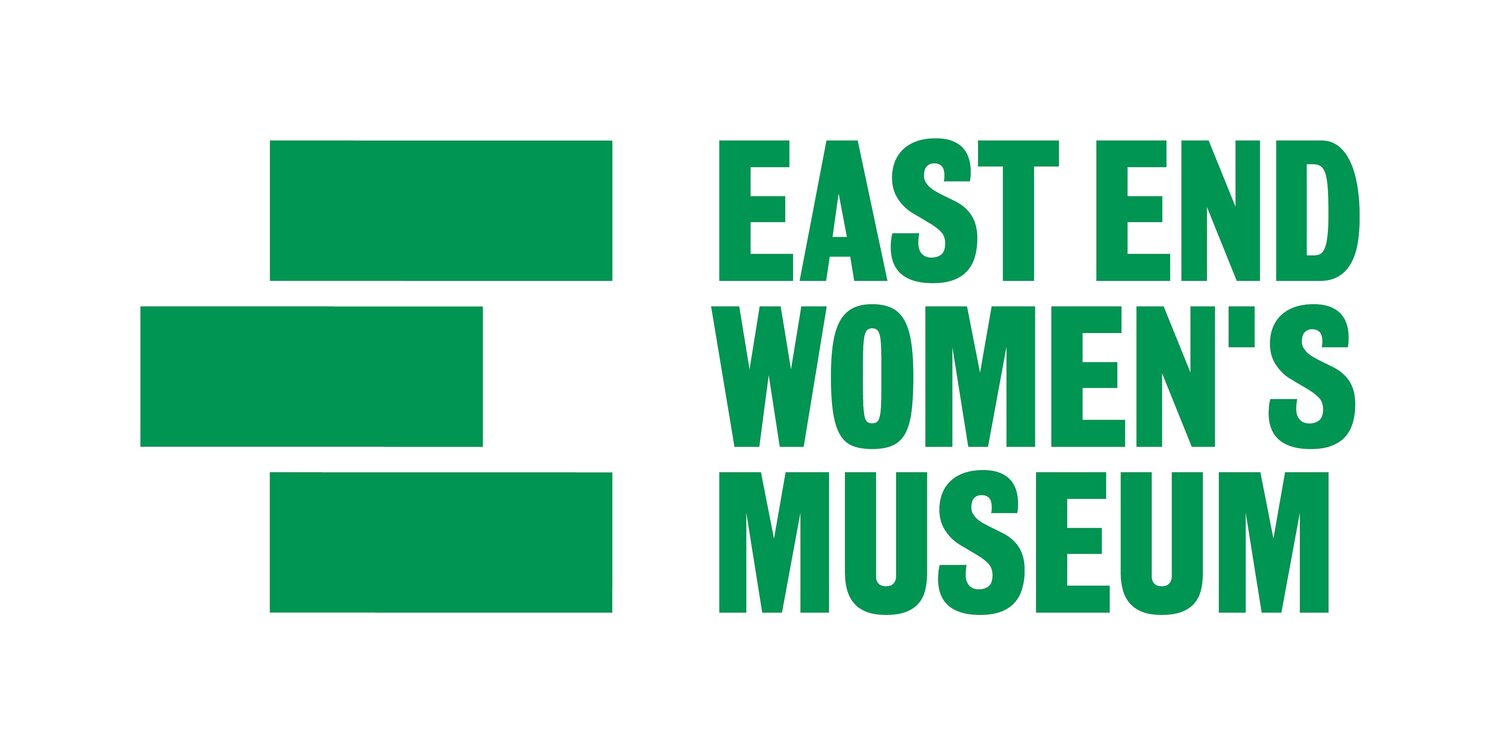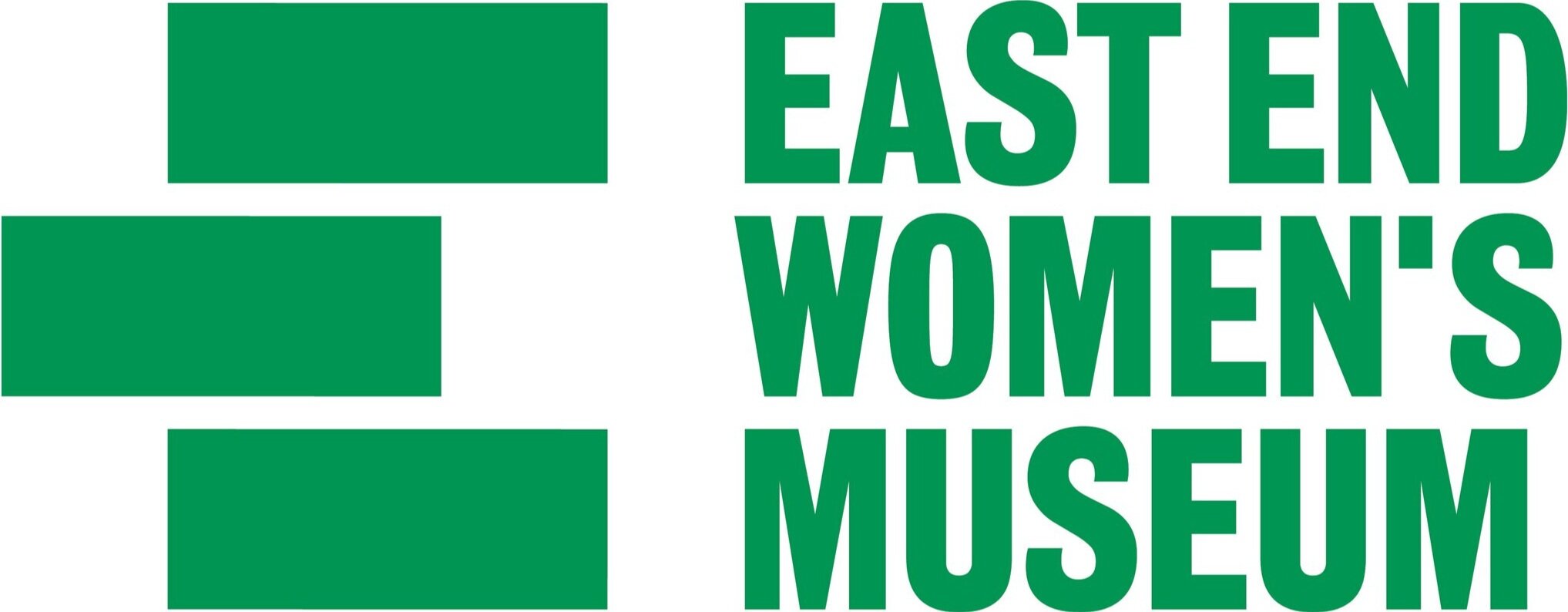For the third edition of #WomensHistoryonMyWalk, museum volunteer Charlotte Elliston uncovers stories of local women’s history from Hackney and Tower Hamlets.
When I wrote the first two blog posts about the women’s history I had discovered during my lockdown walks, I thought I had found all of the interesting stories in my local area to write about; but here we are in the third UK lockdown and I am still finding sites and stories I had no idea about. So in my 3rd post in my #WomensHistoryOnMyWalk series, here are some more women’s history gems from Hackney and Tower Hamlets.
1. The Columbia Road flower market is a wonderful place to visit for those shopping for flowers and plants, but on one of my walks I spotted the piece of street art on a wall alongside the market’s site. It reads “Baroness Angela Burdett-Coutts. Philanthropist. Founder of Columbia Market. 1814-1906”.
Street art near Columbia Road Market [Image credit with author]
I had heard of Angela Burdett-Coutts as I was aware that she was the donor of the amazing drinking fountain in Victoria Park (well worth a visit to go and see) but didn’t realise that she had had anything to do with the flower market. A little bit of online research uncovered the fact that Columbia Market had originally been founded by Angela Burdett-Coutts as an indoor market, in order to create a hub for the local area selling good quality produce in a pleasant indoor shopping market, where people could be protected from the weather. You can see from the pictures what a grand building this was, built in gothic revival style in red brick.
Columbia Market in the Illustrated London News (1989) [Image source: Wikimedia]
Unfortunately, as with many philanthropic enterprises, the true needs of the community were never met. The lack of transport links to the area at the time, competition from well-established Billingsgate and Covent Garden markets, as well as resistance to working in and shopping at an indoor market when they were used to street trading, led to underuse and after 20 years the building closed. A school and small park now cover the area where the original market once stood, with a few traces remaining such as the ornate school railings and a few red brick remnants.
Baroness Burdett-Coutts sounds like an impressive character; she was one of the wealthiest women of her era, spending the majority of her money on charitable causes mainly education or relief of the poor. At her death it is estimated that she had given £3 million to charity in total over her lifetime.
2. The second interesting looking spot I found sits just beside Hackney City farm. There is a small area with newly built housing, and many of these new blocks seems to have been given women’s names. On a new road called Ellen Phillips Lane, I found this sign:
Housing sign on Ellen Phillips Lane [Image credit with author]
I hadn’t realised this at the time, but the road runs behind the old Queen Elizabeth’s Hospital for Children which closed in 2014 and Ellen Phillips Lane itself is named after one of the hospital’s founders. The hospital was established by two sisters, Ellen & Mary Elizabeth Phillips. Ellen Phillips had been working at the Royal London Hospital in Whitechapel during the cholera pandemic, which hit East London in 1866 due to poor sanitation in the water supply.
The sisters together established a Dispensary for Women & Children in Virginia Rd, Shoreditch in 1867, but due to the huge need they saw in the area, they decided to focus their attentions on treating children only; eventually moving their small premises (with room for 12 in-patient beds) to 327 Hackney Rd, where they aimed to build a dedicated children’s hospital. Ellen and Mary gained much support and patronage for the creation of their hospital building, including from the Royal Family, Oscar Wilde and Charles Dickens.
The hospital continued to expand and in 1904, new outpatient, diphtheria and isolation wards were opened and a nurses’ home built two years later. In 1942, the hospital merged with Princess Elizabeth of York Hospital, Shadwell and in 1969, a further development was built housing labs, a diagnostic unit, library and the Academic Department of Child Health. At its peak, the Queen Elizabeth was the largest teaching hospital in London, and an international centre for research into childhood illness.
Dr. Cicely Williams [Image source: Wikimedia]
Some of the other housing block names also yielded interesting results:
Dr Cicely Williams was born in Jamaica and lived most of her life in England. She was one of the first women to study medicine at Oxford and qualified as a physician in 1923. She worked for 2 years at Queen Elizabeth’s Hospital and decided to specialise in paediatrics. She developed research into kwashiorkor (a condition of advanced malnutrition) and did much to advance the field of research on maternal and child health in developing nations.
Dr Winifred Young was appointed to the Queen Elizabeth Hospital for Children, Hackney Road, London, as a research clinician in 1948. She started a special clinic for children with cystic fibrosis at the hospital in 1950 which was highly successful and established the importance of prolonged intensive therapy of lung infections in affected babies.
3. The third spot I discovered was a complete surprise. Just around the corner from my home, I spotted a blue plaque on the wall of a house – but having already researched blue plaques in my area, this was not one on the usual lists.
Blue Plaque for Margaret Tait [Image credits with author]
The text on the plaque reads “Margaret Tait, 1918-1999, filmmaker and poet. Margaret Tait lived here from 1946-1948 while working as an assistant medical doctor in a local practice. In her spare time she wrote scripts and short stories reflecting on her time serving the Royal Army Medical Corps during the Second World War. She also wrote about her new life in London.”
Margaret Tait was born and grew up in Scotland, originally studying Medicine and serving in the Royal Army Medical Corps, she temporarily lived in East London. Throughout her life, Tait made 32 short films inspired by her birthplace in Orkney, and one full-length film, some of which can be viewed via the Lux Gallery website.
In addition, she published three books of poetry and two of short stories, some of which can also be found online and the plaque itself leads to a great website about this little-known artist’s work and life created for the centenary of her birth.
And a little bonus for those interested in more contemporary women’s stories, a few doors down from Margaret Tait’s house is a tunnel running underneath the houses, enticingly labelled ‘To the Mosaics’. Follow it and you will come to a wonderful creation from Tessa Hunkin, who set up a project in 2011 to work with people in recovery from addiction to create some beautiful and huge mosaics. There are a few of these all around the borough, but these particular designs were created for the 2012 Olympics. I’m putting the rest on my list to go and find soon!
Author
Charlotte Elliston grew up in East Ham, but now lives in Hackney. She works part-time as an administrator at the Science Museum, and part-time co-running a small feminist arts organisation, Sweet ‘Art.
Sources and further reading
Valentine A. J. Swain, ‘Queen Elizabeth Hospital for Children, London: Centenary of "The Queen's, 1867-1967’, Middle Articles (1967) https://www.bmj.com/content/bmj/4/5581/733.full.pdf
Pippa Bailey, ‘The Queen Elizabeth Children’s Hospital: 150 Years of Hackney History’, https://www.eastlondonlines.co.uk/2014/02/the-queen-elizabeth-childrens-hospital-150-years-of-history/
Lost Hospital of London, https://ezitis.myzen.co.uk/queenelizabethhackney.html
W. Luckin, ‘The Final Catastrophe: Cholera in London, 1866’, Medical History (1977) https://www.ph.ucla.edu/epi/snow/medhist21_32_42_1977.pdf
D A Christie and E M Tansey, ‘The transcript of a Witness Seminar held by the Wellcome Trust Centre for the History of Medicine at UCL’ (2002) http://www.histmodbiomed.org/sites/default/files/44842.pdf
Cicely Williams (Wikipedia) https://en.wikipedia.org/wiki/Cicely_Williams
Zoe Craig, ‘How England’s Richest Woman Started London’s Prettiest Market’, https://londonist.com/london/history/columbia-road-market
Spitalfields Life, ‘Remembering the Queen Elizabeth’s Hospital for Children' https://spitalfieldslife.com/2013/10/21/remembering-the-queen-elizabeth-hospital-for-children/
Margaret Tait https://lux.org.uk/artist/margaret-tait
Margaret Tait Profile https://www.scottishpoetrylibrary.org.uk/poet/margaret-tait/
Tessa Hunkin Profile https://www.tessahunkin.co.uk/about
‘Shepherdess Walk’, Hackney Mosaic http://www.hackney-mosaic.co.uk/shepherdess-walk/4581051788






![Street art near Columbia Road Market [Image credit with author]](https://images.squarespace-cdn.com/content/v1/58eb9f4d46c3c45cf0e02ec0/1614265411461-J1MJ36EN1XL6TAFGXFGO/Image+1.jpg)
![Columbia Market in the Illustrated London News (1989) [Image source: Wikimedia]](https://images.squarespace-cdn.com/content/v1/58eb9f4d46c3c45cf0e02ec0/1614265283694-J2FQAQEBFU7PODI1J1G8/ILN_1869%2C_p._440.jpg)
![Housing sign on Ellen Phillips Lane [Image credit with author]](https://images.squarespace-cdn.com/content/v1/58eb9f4d46c3c45cf0e02ec0/1614265513284-RCEDQDENN4BOB0V6M2HY/Image+4.jpg)
![Dr. Cicely Williams [Image source: Wikimedia]](https://images.squarespace-cdn.com/content/v1/58eb9f4d46c3c45cf0e02ec0/1614265686581-21BK9V5A0CSJV671O7H1/Image+5.jpg)
